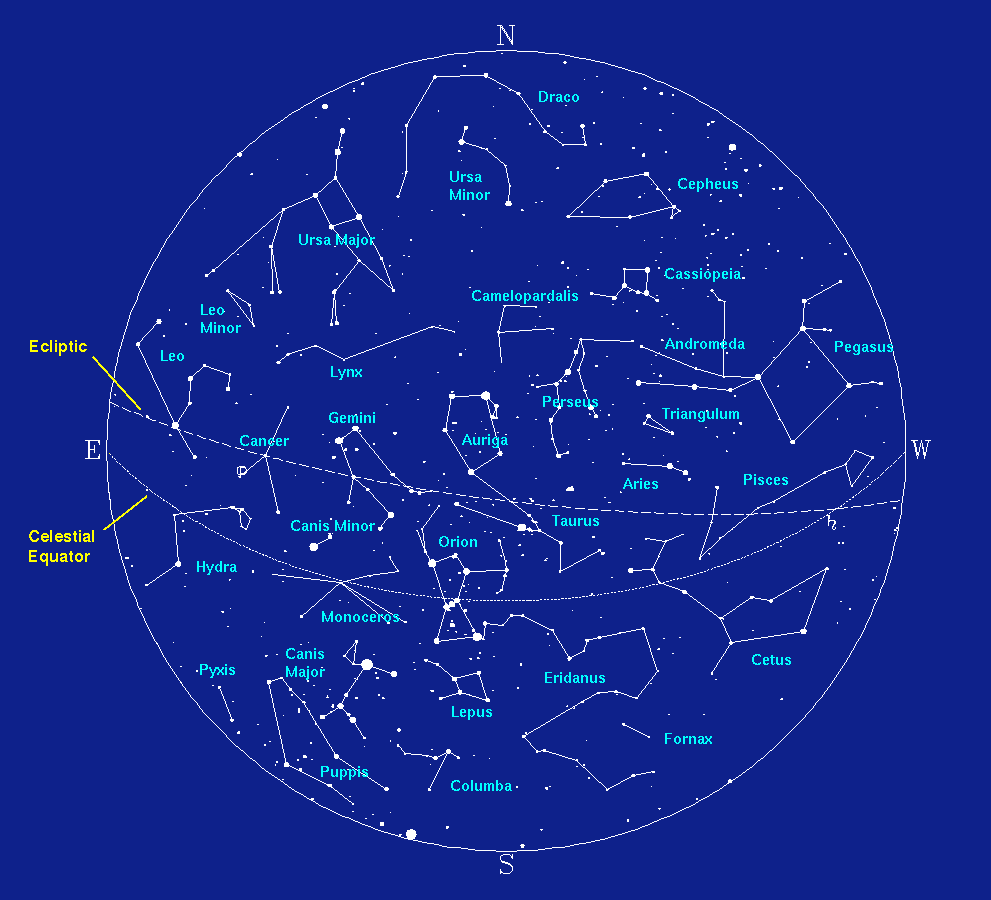If we look down on the Solar System from a point high above the North Pole, the way we normally draw it, we shall see the Earth and the other planets going round the Sun and the Moon going round the Earth. But if we look at it edge on, the orbits of the Moon and the other planets are at a very small angle (here shown greatly exaggerated) to the Earth’s orbit.
What this means is that if we draw the solar system on a piece of paper the Earth and the Sun are always actually on the piece of paper but the Moon and other planets may be one or two millimetres above or below it.
We can only get an eclipse of the Sun when the Moon passes exactly between the Earth and Sun, and an eclipse of the Moon when it passes exactly through the Earth’s shadow, and these can only happen when the Moon is actually on the piece of paper. So the “piece of paper”, which books on astronomy refer to as the plane of the Earth’s orbit, is called the ecliptic. The Moon and all the planets are always very close to the ecliptic, sometimes just above it, sometimes just below it, and twice each orbit actually on it.
Sam’s Games Room is at the bottom of the Lighthouse. It is completely round with bare walls and no windows, so he has covered the walls with posters. The football club he supports plays in blue shirts and he has posters of all the players: these are all at eye level. Above and below them are posters of other people, other sportsmen and women, famous scientists, astronomers and mathematicians, photos of the Moon and Earth and planets, Stonehenge, Harry Potter, almost anything he is interested in.
To celebrate the end of term Sam invites lots of his class-mates round for a party, and they are all in the Games Room. As they walk around talking to each other, eating sandwiches and cakes and playing games, as they look up or down they will see posters of lots of different people and things, but when they look at each other, behind the person they are looking at they will always see only a poster of a footballer in a blue shirt.
The same is true of the Sun and the Earth and Moon and the other planets. We can imagine the Earth (shown in blue) as being in or at any rate near the middle of the Celestial Sphere: whichever direction we look in from the Earth we shall see lots of stars. But if we look in the direction of the Sun or Moon or any of the other planets, behind what we see will always be the celestial equivalent of a footballer in a blue shirt.
The constellations which lie on the ecliptic make up the Zodiac, from the Greek word for circle of animals, because the Greeks had given them all the names of animals, although today we use the Roman names some of which are not animals.
This picture shows just the Earth (in blue) the Sun (in yellow) and Mars (in red).If we look from the Earth towards the Sun Taurus will be behind it, if we look in the direction of Mars Capricorn will be behind it, so we say “The Sun is in Taurus” and “Mars is in Capricorn.” Of course we cannot actually see Taurus in the middle of the day, but that is where we would see it if we could!
As the Earth moves round the Sun the Sun moves through the whole Zodiac in a year, so if today the Sun is in Taurus in six months time it will be in Scorpio. The Moon and planets also move through the Zodiac, but because both they and the Earth are moving their motions through it are more complicated, this is discussed on the Page on Mars.
For simplicity the above drawing shows all the constellations the same size, but if you look at the picture of the sky below you will see that the amounts of each constellation actually on the ecliptic are not all the same, so the time each planet spends in each constellation is not the same.Note that in the 21st Century the actual positions of the Sun and Moon and Planets in the sky each day are nothing whatever to do with the planetary aspects used in the horoscope page of a newspaper, astrology is discussed on another Page.
The Sun must be on the ecliptic, and the Moon and Planets must be on or very close to it, so if you visualise the path that the Sun takes through the sky during the day the Moon and planets must follow the same path at night.

Because of the tilt of the axis of the Earth the Ecliptic is not the same as the Celestial Equator, the part of the sky immediately above the Earth's Equator.
© Barry Gray September 2023